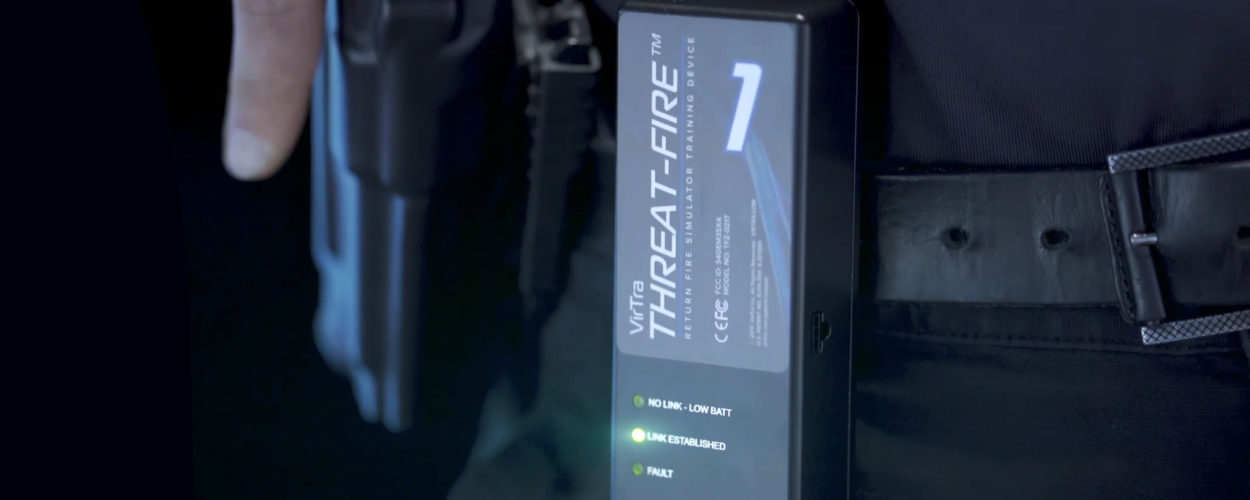
Over the past few years, several types of consequence devices and “pain penalties” have been integrated into law enforcement training sessions. Instructors initiate these so trainees experience a potential negative consequence after performing an incorrect action—both teaching and enveloping the trainee in stress (Central Nervous System arousal) for the duration of the session. Stress then becomes a fundamental part of learning, as trainees learn to control their responses and function under pressure, which applies to the field.
Learning from Stress with Use of Force Training Simulators
However, these benefits only occur when the proper consequence or “feedback” device is used. Not just any device will work—the tool must be safe and effective to be considered an operative training supplement.
To explain the purpose of these simulation training tools, one must understand what the tools should not do. Many consequence devices are “shoot back” devices meant to simulate return fire. But by solely using devices as gunfire penalties, instructors are limiting a trainee’s learning and stress inoculation. VirTra recommends using feedback devices to also simulate explosions, dog bites, knife attacks, punches and other actions that would cause injury in the field.
As mentioned before, another primary function is stress inoculation. While physical pain penalties can teach trainees proper actions, the knowledge that one may be shocked causes the trainee stress (arousal) and increased physiological state. The simulation no longer becomes a game—it becomes a situation where they must control their physiological arousal to perform their best.
The Good
While good consequence devices can be used for stress inoculation and provide real-life consequences, they must be effective and safe. VirTra ensures trainees have minimal risk of personal injury and can experience stress within the judgmental use of force simulator with Threat-Fire®. The device attaches to the belt and is instructor initiated, providing the trainee with a small electric stimulation on the surface of the skin when needed. Its lightweight design, adjustable shock duration and training enhancement features make it the perfect addition to police training simulators.
The Bad & The Ugly
However, not all consequence devices are created equal! Some outdated stress-inducing methods include firing actual projectiles during the scenario. This can be dangerous, as small projectiles could hit trainees in the eye, and require cleaning up after every use. Most trainers have moved away from projectile-based penalties, but there are other devices that are just an ineffective and harmful. These devices also distract the training from student performance while they are aiming the device.
Some new stress-inducing electronic devices include rapidly flashing lights to confuse the senses. According to the CDC, flashing lights could be hazardous as about 1.8% of American adults experience epilepsy. In rare cases, some trainees may not know they are epileptic until experiencing a seizure triggered by flashing lights.
These devices also are equipped with a piercing sound designed to over-simulate the senses, with some reaching sound levels up to 120 decibels (dB). The Hearing Health Foundation states that sounds 115 dB or higher can damage a person’s hearing within under 30 seconds of exposure to the noise.
While flashing lights and piercing noises are indeed distracting, they have two big downfalls. One is their lack of realism. The second is that this additional light and noise masks critical information that should be coming from the simulation.
Trainees cannot effectively learn from feedback devices such as these. Instead, with VirTra’s Threat-Fire, trainees are provided with a powerful, realistic consequence that safely provides stress-inoculation. Furthermore, the Threat-Fire completes the interaction loop; in training, the trainee engages simulated suspects and now the simulated suspects engage the trainee in a safe, responsible manner.
Training environments are a safe, controlled environment where students and trainees are able to make mistakes, learn and overcome them before entering the field. If the risks of injury are high, training becomes a dangerous task and may cause deep training scars. Providing stress and real-life consequences in a simulated environment is an effective way to prepare officers and warfighters in training, but note the good, bad and ugly ways of doing so. Research extensively before investing in a feedback device. For more information about the Threat-Fire, such as research articles published or case studies produced, please contact a VirTra specialist.
Recently Published
Join Our Newsletter







